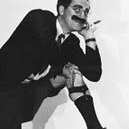The Gasohol A Go-go
-
Recently Browsing 0 members
- No registered users viewing this page.
-
Topics
-
-
Popular Contributors
-
-
Latest posts...
-
30
USA Secret Service Agent Suspended After Trump Assassination Attempt in Butler
Oh no, are you ok petal? The rightest of posters are the biggest of snowflakes. The inference was clear, the language was used to make a point. -
105
-
0
Dems can’t win elections so the next best thing , dogwhistle fed law enforcement as Nazi…
…Fascist . 70 % of the arrested illegals are criminal aliens! If dems want to harbor criminals ,tough s- - t . Biden/ Harris newcomers, some 400k -650k were criminals and thousands upon thousands before that. Ya have to change the law ,Border Czar Tom Homan says! Laws that Congress enacted and made a criminal offense in 1952. Homan compares the present Dem Congress to Congress of yesteryear! This isn’t the party of yesteryear Tom its the party that reshaped the old liberal system and created a Culural Marxist / Socialist regime that uses Stalinist tactics of mob rule! Below the Marxist aclu describes ( old article)their intentions , “Repeal” in the quote below They want to by pass the repeal by protecting criminals by having their leftist judges use nation wide injunctions, The SCOTUS put a stop to that. “Federal laws that criminalize the act of border-crossing have been on the books since the 1920s, first proposed by members of Congress who were explicitly motivated by eugenics and white supremacy. They belong in the dustbin of history, along with the racism that undergirded them. It is long past time for their repeal”. https://www.aclu.org/news/immigrants-rights/immigrants-rights-arent-possible-if-we-dont-stop the story is based on a forbes& aclu report -
108
MAGA Burning their hats
burn all the hats you want yah feckless Biden loving Muppets, in the meantime MAGA's laying down the program cuz you're too useless to be a MAGA extraordinare and govern. still trying to engineer new and daft ways to keep losing elections.... to TRUMP! -
51
USA Fetterman Slams Mamdani After Primary Win: “Not Even a Democrat”
I sympathise with him. He didn't leave the Dems. The Dems left him. But he needs to wake up and smell the coffee. The new Dems like some infamous national socialists before them are deeply authoritarian, viscous and dangerous. -
5
What is the best choice for health insurance for someone 75 years old?
Mived to Insurance forum. Cigna Global will newly insure up to age 99. But as with any insurer, pre-existing conditions will be excluded.
-
-
Popular in The Pub






.thumb.jpeg.d2d19a66404642fd9ff62d6262fd153e.jpeg)








Recommended Posts
Create an account or sign in to comment
You need to be a member in order to leave a comment
Create an account
Sign up for a new account in our community. It's easy!
Register a new accountSign in
Already have an account? Sign in here.
Sign In Now